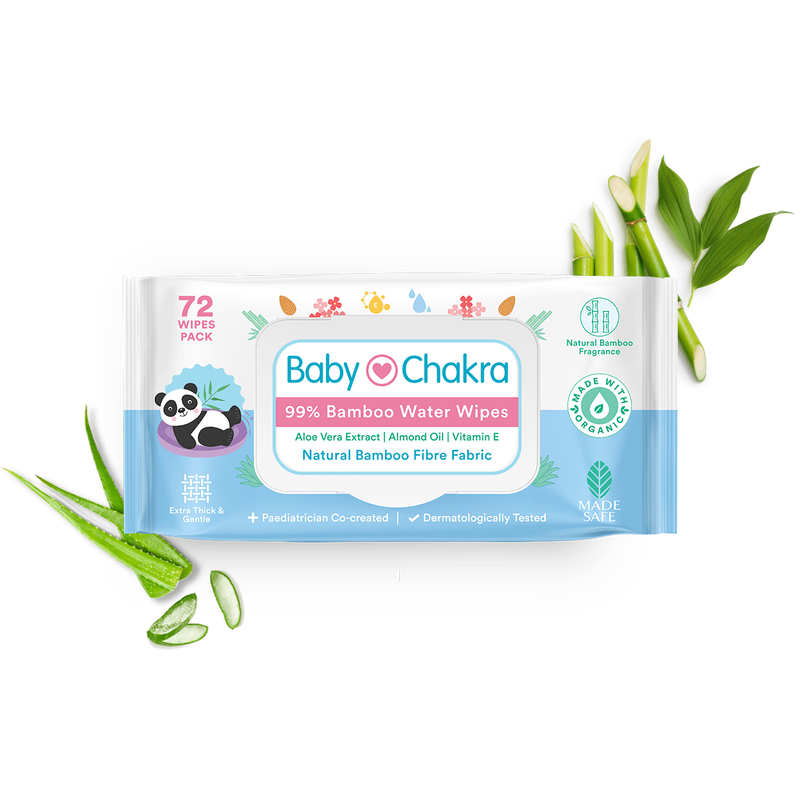
Can Teething Cause Body Rash? Identifying And Treating Teething Rash
15 Jun 2022 | 4 min Read
Reema Shah
Author | 740 Articles
Once your baby starts teething, you may notice that she/he has developed a rash. However, it is important to understand whether the rash is caused directly by teething. You also need to know when teething commonly occurs so that you can identify and treat the rash accordingly.
When your baby starts teething, you can use baby wipes to wipe off the saliva so that the rash does not get severe.
Can Babies Get A Rash From Teething?
Many parents commonly ask “can babies get a rash from teething”? The answer is – A teething rash happens usually when bits of food, saliva, and continuous wetness irritate your baby’s skin. Your baby can develop a harmless rash when there is frequent rubbing on the skin caused by clothing, hugging and playing.
The rash is not a direct cause of teething but happens due to the excess saliva leaking out of the child’s mouth. This can happen due to irritated gums or increased chewing. The tiny pieces of food get mixed with your child’s saliva and hence irritate their skin.
Can Teething Cause A Rash All Over The Body?
Teething rashes can develop on the baby’s cheeks, chin, neck and chest, and look like chapped skin or small red bumps. Teething should not cause a rash on the baby’s arms, legs or back. However, any full-body irritations in your baby’s body should be looked at by a paediatrician.
Common Symptoms of a Teething Rash
Most babies start drooling more when they are about 4-6 months old and that’s when their first tooth is also on its way. Some common signs of teething are an uncomfortable and sore mouth. Hence, the body reacts to it by producing a teething rash at any point. However, the rash itself won’t determine when your baby’s teeth are on the way.
The teething rash can appear on any area where the drool gathers and includes:
- Chin
- Chest
- Neck
- Cheeks
If your baby regularly uses a pacifier, you might also see a cluster of drool rash around the skin that touches the pacifier. The skin can be slightly raised or flat along with tiny bumps and red patches. Your baby’s skin can also become chapped. The teething rash can go and come for weeks.
Here are other symptoms of teething are:
- Drool
- Tend to chew on objects or toys a lot
- Rash
- Pain in the gums due to crying or fussing

If your child has a fever, it is not because of teething but could be the symptom of another underlying condition. Ensure you check your baby’s fever and take them to a doctor in case it gets worse.
How to Treat Teething Rash
If your baby’s teething rash has occurred from excess drool, then it normally goes away on its own and while there are home remedies to treat it, it’s better to talk to a paediatrician for the right treatment.
If your child’s rash doesn’t get back to normal, the doctors may recommend medications and ointments to provide relief. If your child’s rash turns into red or dark purple spots which are swollen, oozy or wet, take them to a paediatrician immediately.
By keeping your child’s skin away from moisture, and irritation and avoiding drying products, you can prevent the condition from recurring and worsening.
Here are some steps to prevent or treat teething rash:
- Use a soft cloth or natural and organic baby wet wipes to wipe away drool as soon as possible from around your child’s face, mouth, chin, and lips.
- Ensure that your child’s clothing is not wet. It should also not be wet from drool as it can irritate the skin.
- You may apply petroleum jelly-like cream around the affected areas to create a protective barrier between the skin and the saliva.
- Use a cloth to cover the clothes your child is wearing to catch falling drool. It can even come in handy to wipe the drool.
- Use mild soaps and safe wipes preferably natural bamboo wipes to clean and treat your child’s rash and prevent irritation.
- Avoid excessive scrubbing of the areas affected by rash as it can worsen the condition further.
Teething does not cause a rash but it is the drooling that’s responsible for it. Ensure that you keep your child’s skin and the clothing they wear dry to avoid irritation and worsening the condition. Do consult with your paediatrician in case the condition does not improve itself over time.
Cover image source- cardsdental.com
A


Suggestions offered by doctors on BabyChakra are of advisory nature i.e., for educational and informational purposes only. Content posted on, created for, or compiled by BabyChakra is not intended or designed to replace your doctor's independent judgment about any symptom, condition, or the appropriateness or risks of a procedure or treatment for a given person.

